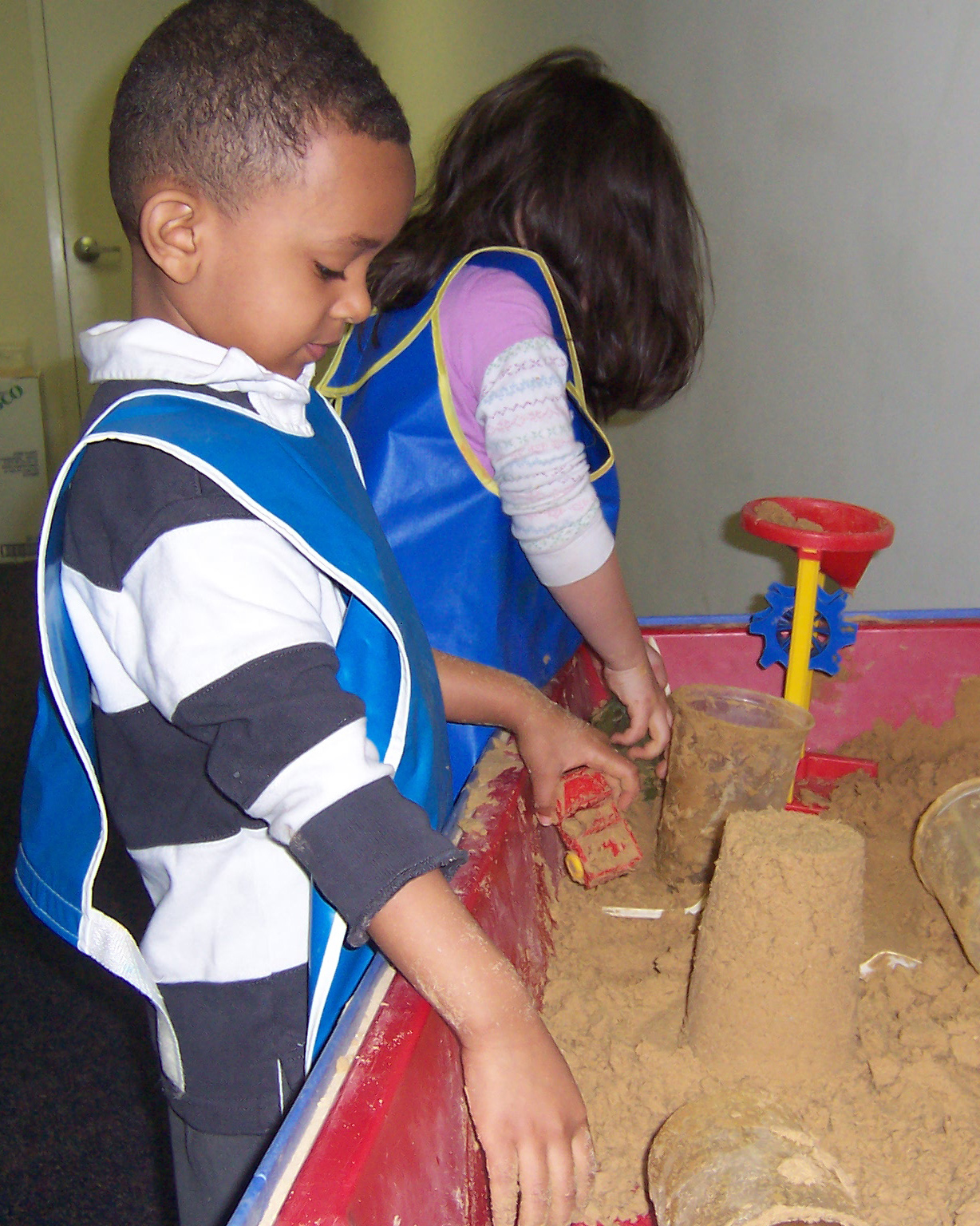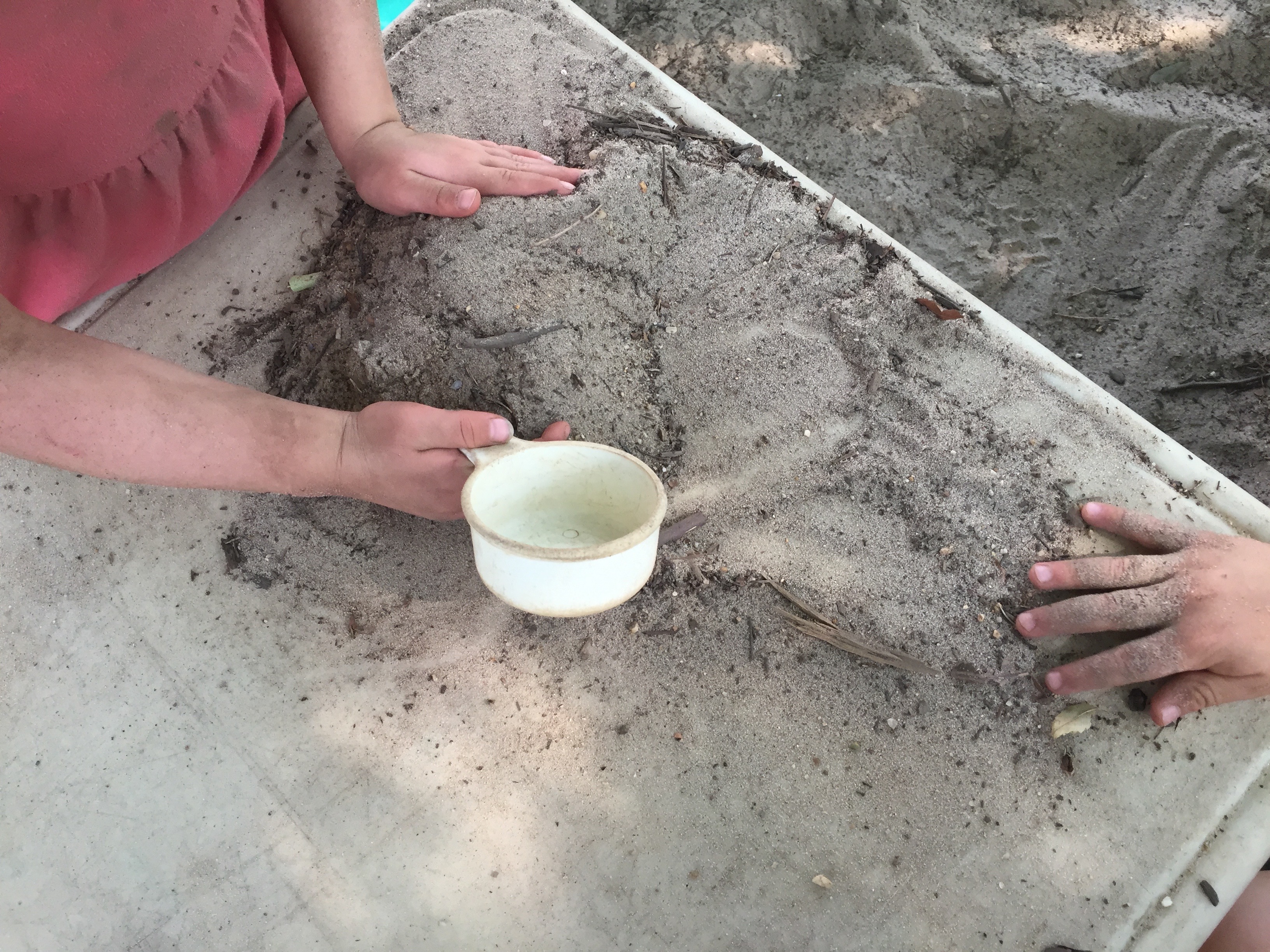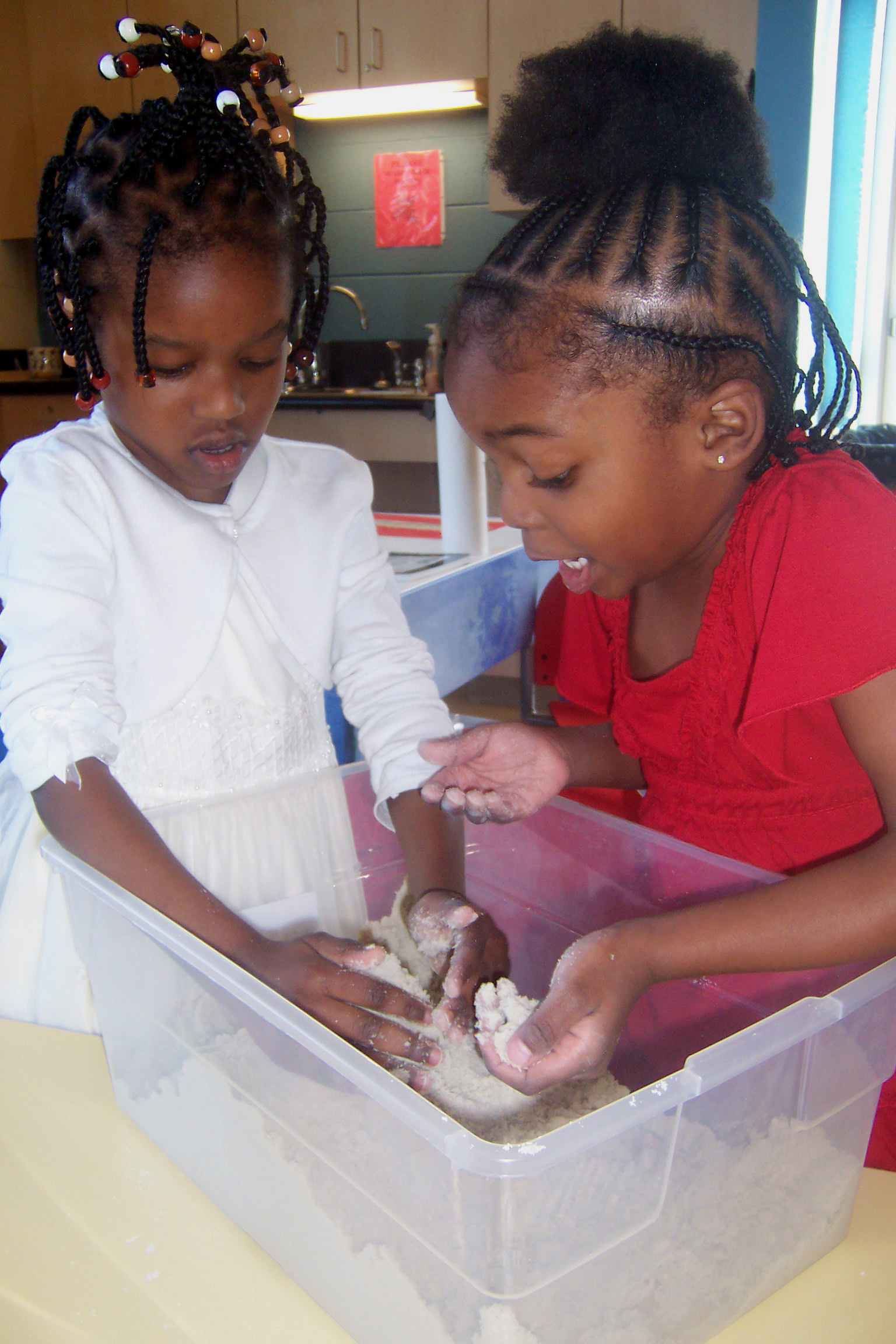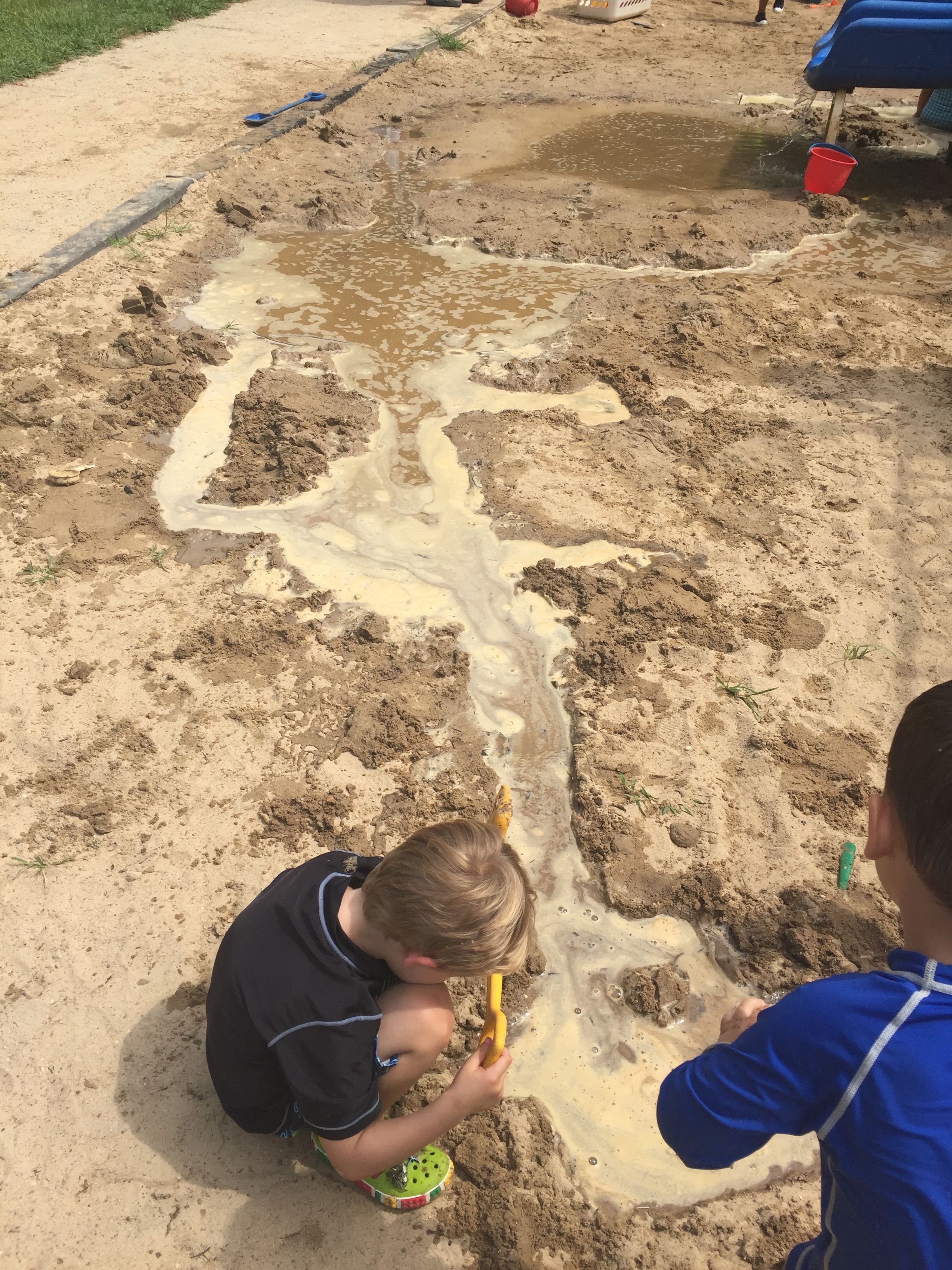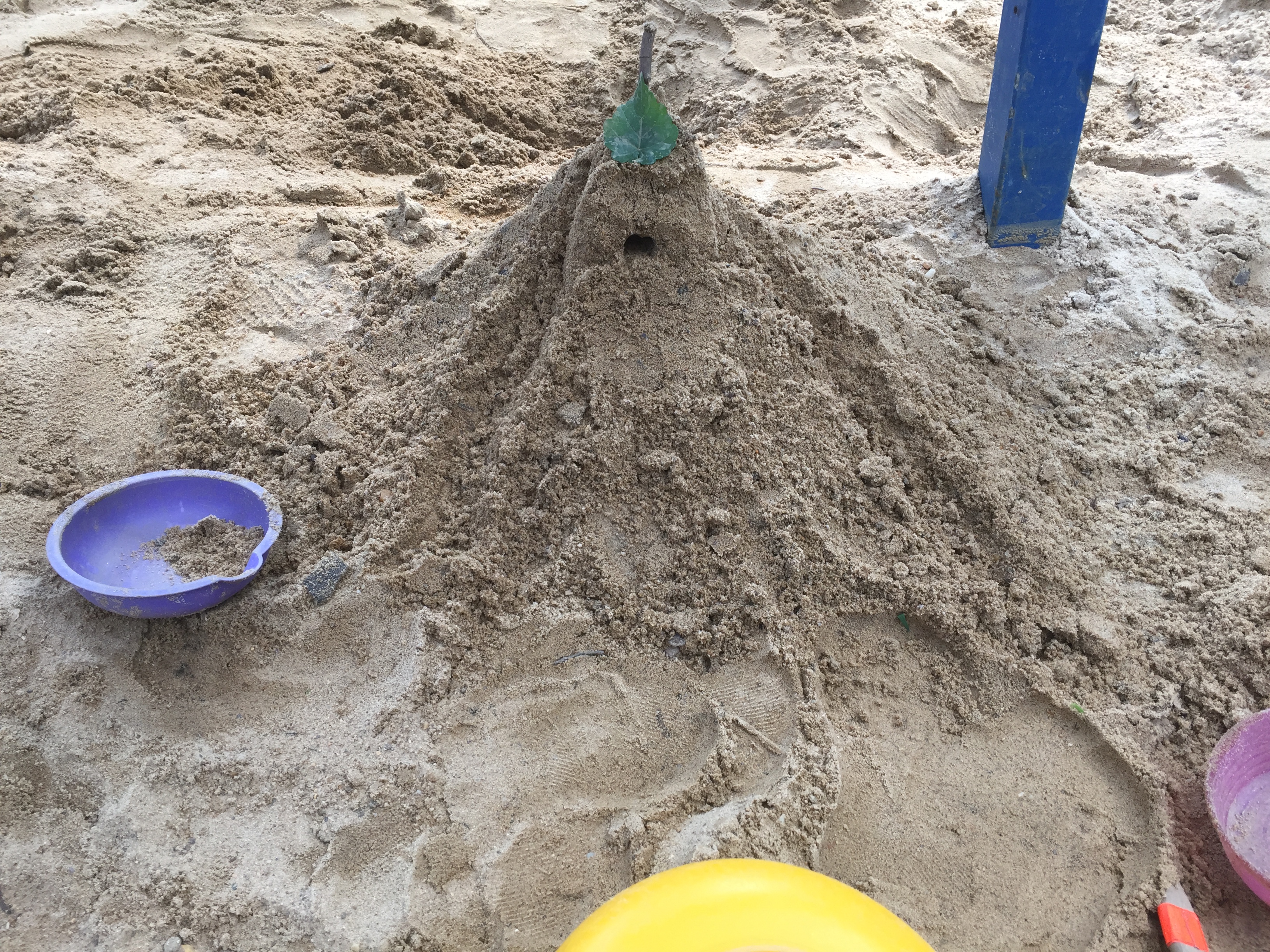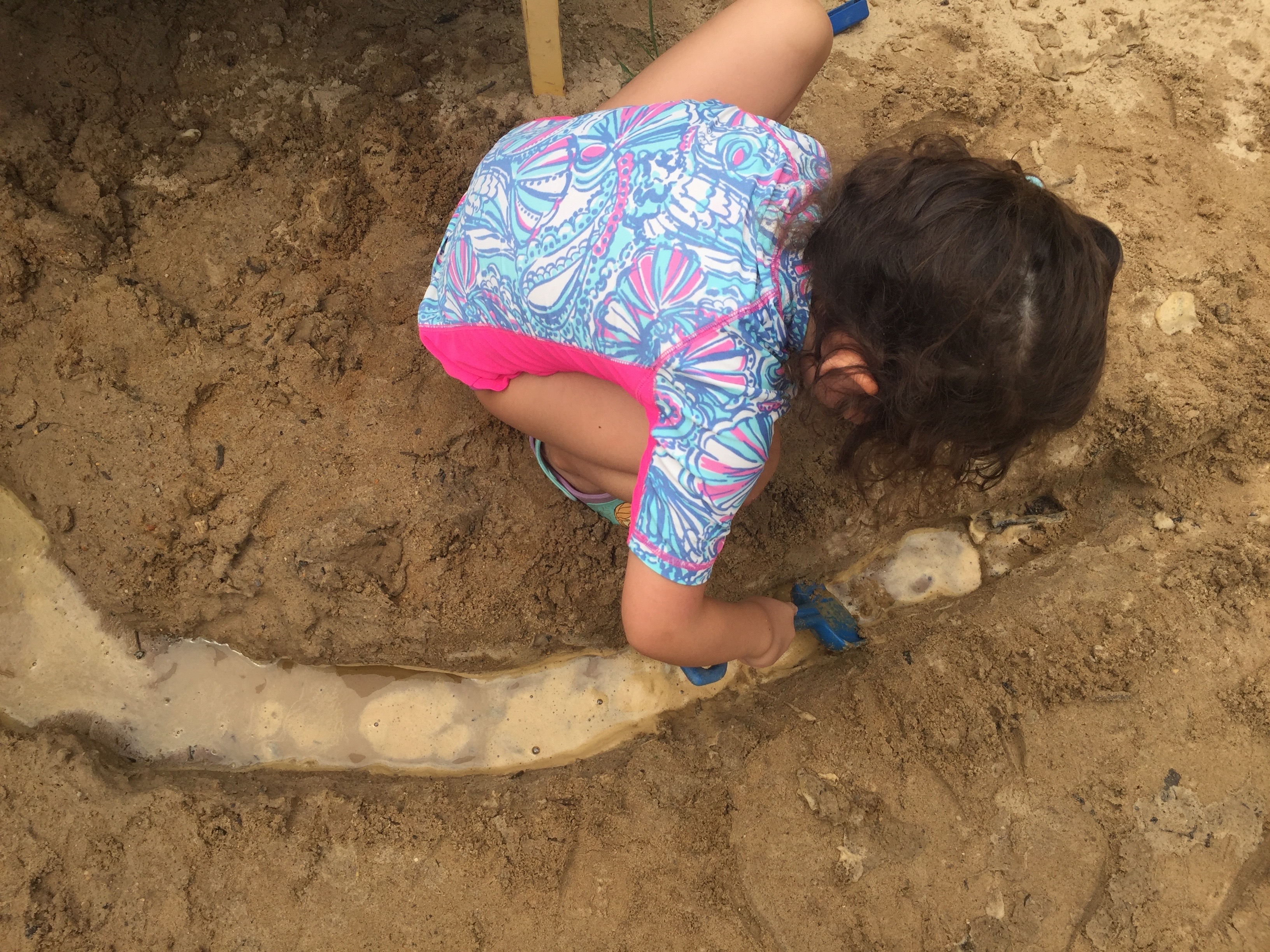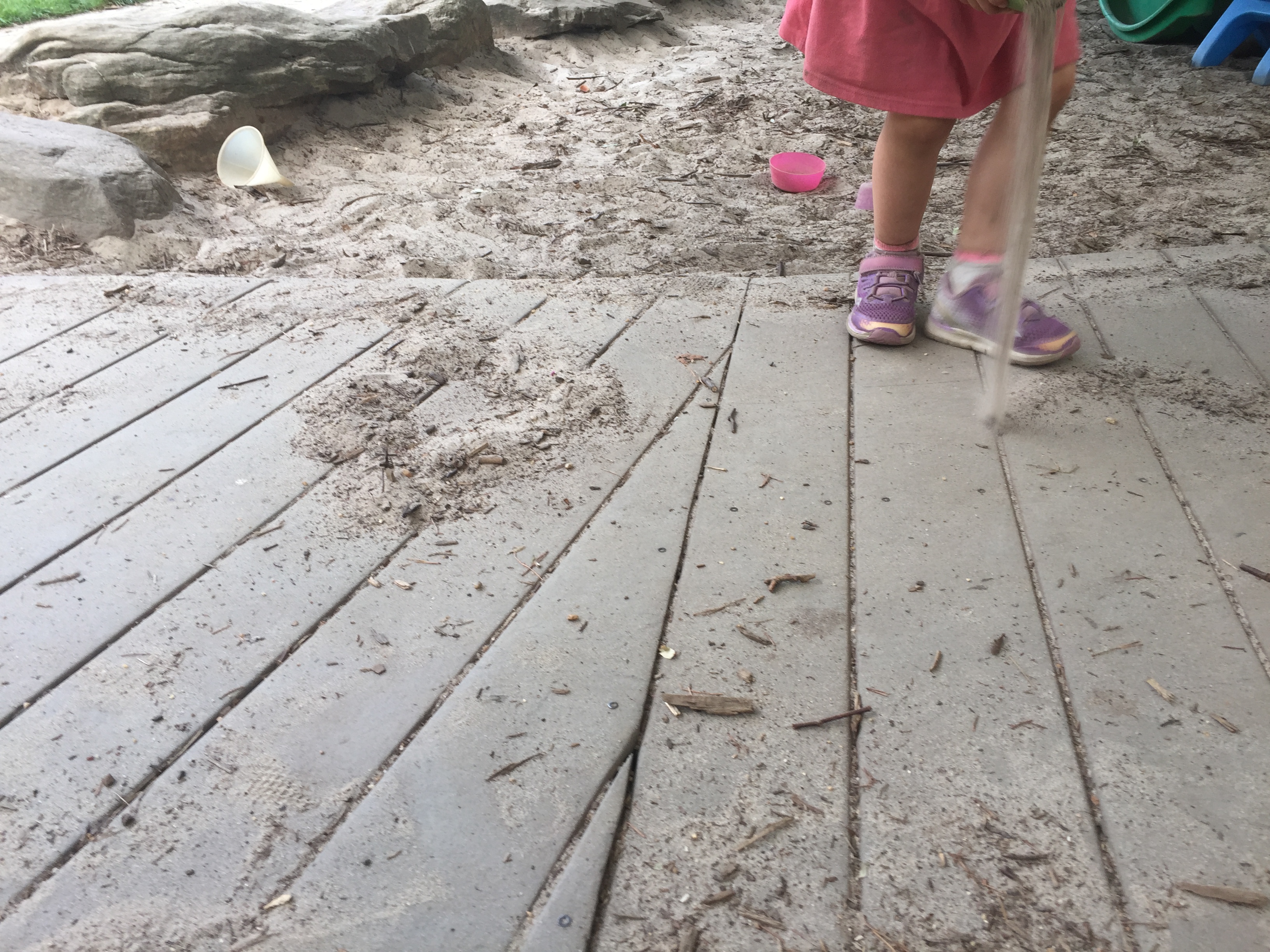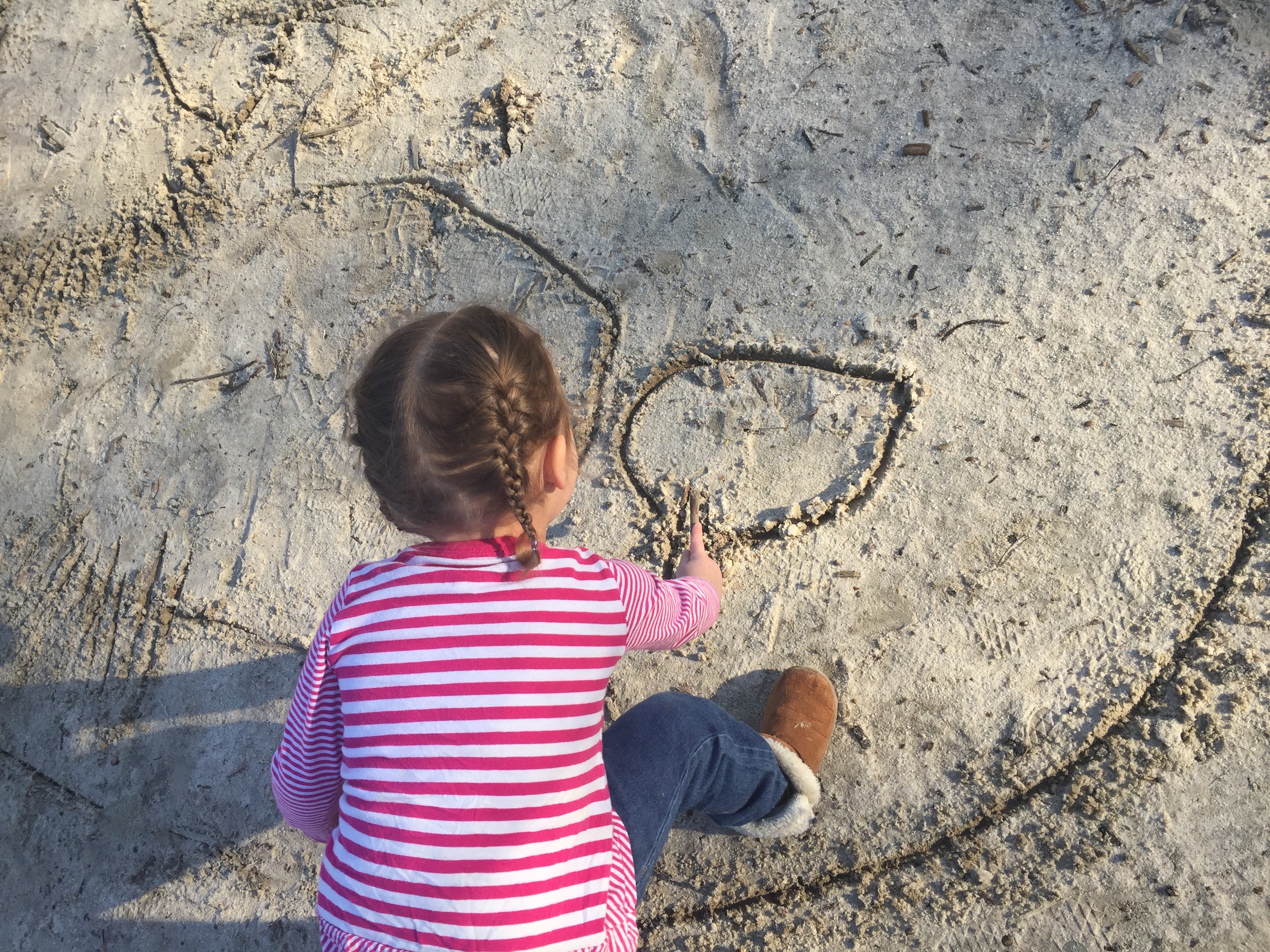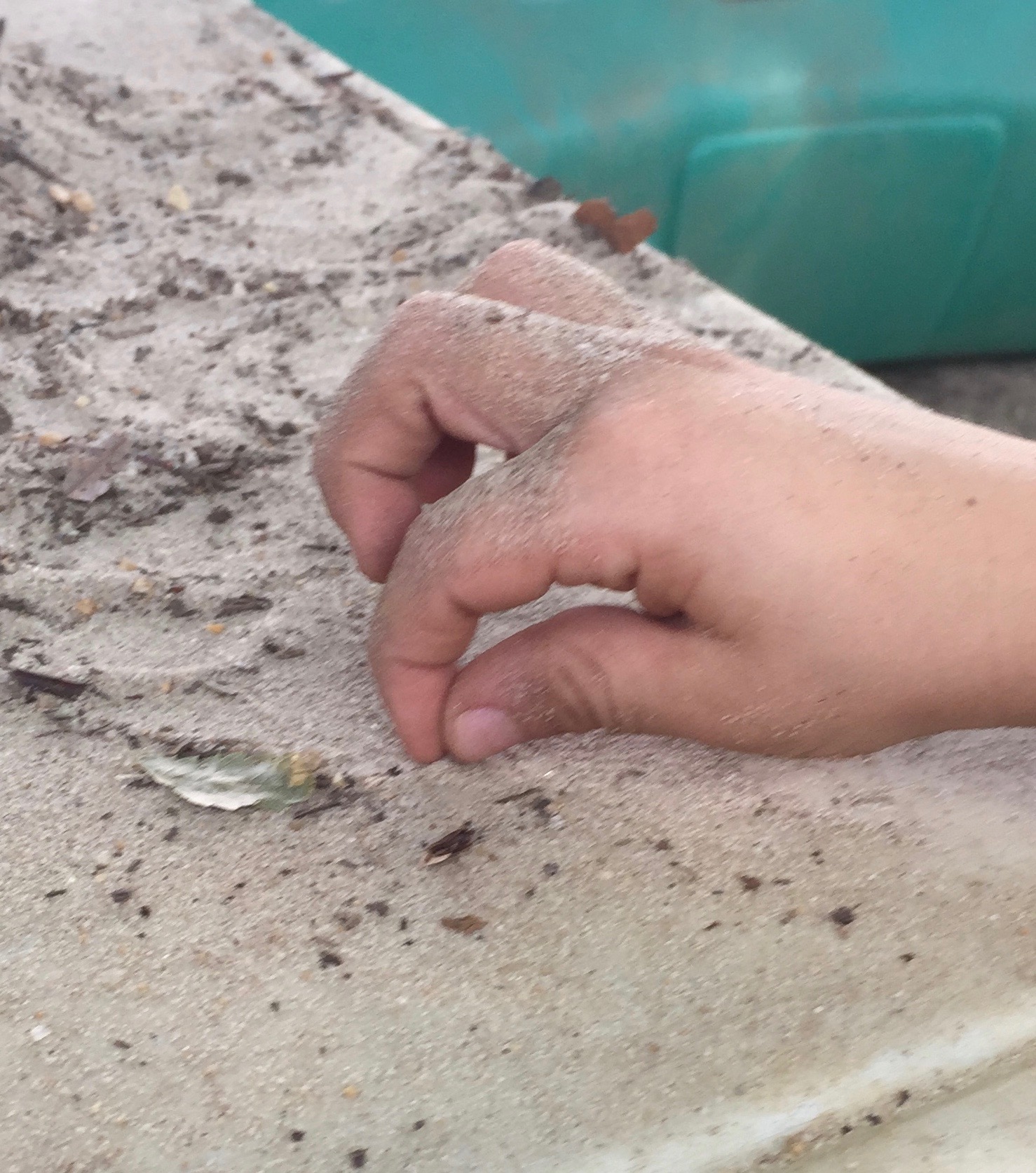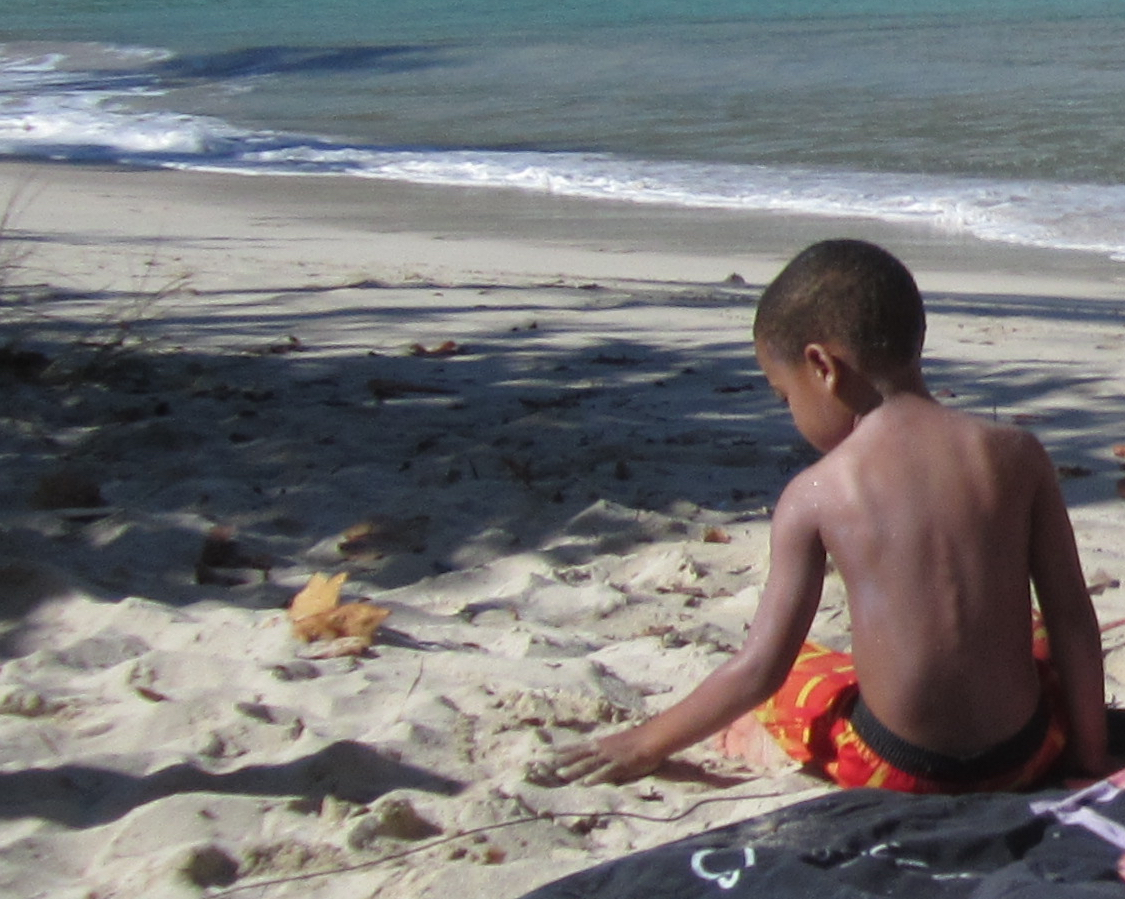Sand explorations
By Peggy Ashbrook
Posted on 2019-08-03
Sand play engages children in many of the Next Generation Science Standards (NGSS) disciplinary core ideas, practices, and crosscutting concepts. Explorations with sand also involve natural phenomena of flow and adhesion, and math concepts of scale and volume, as children scoop, pour, and build. Children observe how sand grains flow when dry and stick together when wet. The small grains combine to create a large body of matter (2-PS1-1, 2-PS1-3, and Scale, Proportion, and Quantity). Children feel the small individual grains and root down into large amounts of sand in sensory experiences.
They use wet sand to make models of landscapes (2-ESS2-2) and structures such as tunnels, towers, and channels (K-2-ETS1-2 and Developing and Using Models).
Children draw with sand and use it as a sketchpad, drawing and writing with sticks.
In small amounts or beach expanses, sand is a medium for expanding children’s experience with and knowledge of the world.
Sand play engages children in many of the Next Generation Science Standards (NGSS) disciplinary core ideas, practices, and crosscutting concepts. Explorations with sand also involve natural phenomena of flow and adhesion, and math concepts of scale and volume, as children scoop, pour, and build. Children observe how sand grains flow when dry and stick together when wet.
The Early Years
Yes, and Cross-Curricular Planning for Preschool
Modern 3Rs
By Gabe Kraljevic
Posted on 2019-07-27
 I had a hard time figuring out a way to get my second-grade students involved with recycling or something with the 3Rs. So, I was just wondering if you had any suggestions on something better?
I had a hard time figuring out a way to get my second-grade students involved with recycling or something with the 3Rs. So, I was just wondering if you had any suggestions on something better?
— N., Massachusetts
While all three of the Rs (Reduce, Reuse, Recycle) are important, I find that we really only concentrate on one: recycle. Reducing our use of resources, which in turn reduces energy consumption and waste, is the ideal first step.
For your young class I recommend starting with awareness. Identify and quantify the waste in your classroom. This integrates math, observation, measuring, and sorting skills. Introduce how to display and present their collected data. Students can research how the different items are produced and how they behave in the environment.
Once the students have a base line of their waste production, brainstorm ways to reduce the amount. This may include communicating the students’ ideas to parents. Ask the class if there is refuse that could be replaced with reusable items such forks, spoons, and water bottles. Identify the items still being discarded that can be recycled and research recycling options.
Continue quantifying how much waste your students produce and track results as they try different strategies to reduce it. Don’t forget to update the display!
Once your students become 3R practitioners, consider introducing them to advocacy. They can create posters, make presentations to other classes, set up an information booth with literature for the other students in the school.
Your 3R program has now become a complete cross-curricular project!
Hope this helps!
Image credit: OpenClipart-Vectors from Pixabay
 I had a hard time figuring out a way to get my second-grade students involved with recycling or something with the 3Rs. So, I was just wondering if you had any suggestions on something better?
I had a hard time figuring out a way to get my second-grade students involved with recycling or something with the 3Rs. So, I was just wondering if you had any suggestions on something better?
— N., Massachusetts
Reflective questions for choosing resources or shaping your practice
By Peggy Ashbrook
Posted on 2019-07-26
Asking myself about my teaching practice and looking for evidence to answer reflective questions (see Resources) that support my growth as an educator means considering how I collect data when working with children or adults.
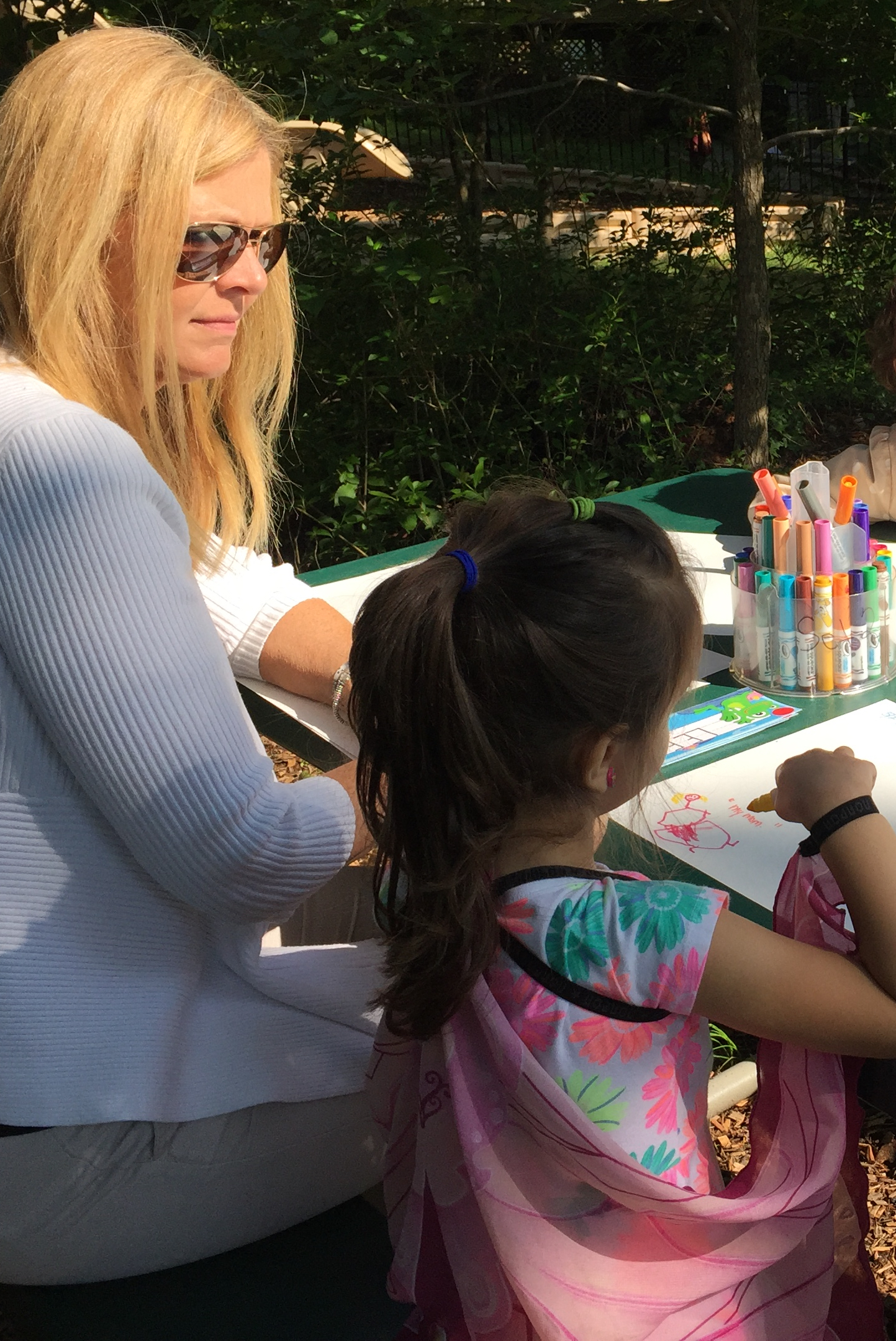
Reflective questions from the Thinking LensTM guide lead teacher Brian Silveria’s support of, and participation in, his children’s discoveries in their exploration of natural phenomena such as the flow of rain water (Silveria with Curtis 2018.) Members of the NAEYC Early Childhood Science Interest Forum (ECSIF) (Peterson et al 2019) discuss the use of online resources and provide two sets of questions we can use to tell if activities and lesson plans found on the web are of high quality. Use the questions tool to help determine if activities engage children in the practices of science and engineering (NRC 2013), don’t underestimate children’s abilities to learn core science ideas, and provide the necessary time children will need to deeply engage in meaningful scientific questions and engineering problems. And to avoid craft-only, teacher demonstrations, or prescribed steps for children to follow exactly.
Resources
Curtis, Deb, and Margie Carter, Debbie Lebo, Wendy C.M. Cividanes. 2013. Reflecting in Communities of Practice: A Workbook for Early Childhood Educators. Redleaf Press. https://www.redleafpress.org/Reflecting-in-Communities-of-Practice-A-Workbook-for-Early-Childhood-Educators-P2353.aspx
NRC. 2013. Next Generation Science Standards: For States, By States. Washington, DC: The National Academies Press. www.nextgenscience.org/next-generation-science-standards.
Peterson, Sherri, and Cindy Hoisington, Peggy Ashbrook, Beth Dykstra Van Meeteren, Rosemary Geiken, Sonia Akiko Yoshizawa, Sandy Chilton and Joseph B. Robinson. 2019. To Pin or Not to Pin? Choosing, Using, and Sharing High-Quality STEM Resources. Young Children. 74(3): 79-85. https://www.naeyc.org/resources/pubs/yc/jul2019/high-quality-stem-resources
Silveria, Brian, with Deb Curtis. 2018. Look, Listen, Learn. Where Does the Rain Go? Considering the Teacher’s Role in Children’s Discoveries. Teaching Young Children. 11(5): 22-23. https://www.naeyc.org/resources/pubs/tyc/aug2018/considering-teachers-role-childrens-discoveries
A Thinking LensTM for Reflection and Inquiry. https://www.uwyo.edu/wind/_files/docs/echo/ec-resources/session-materials-thinking-lens-1.pdf
Asking myself about my teaching practice and looking for evidence to answer reflective questions (see Resources) that support my growth as an educator means considering how I collect data when working with children or adults.



